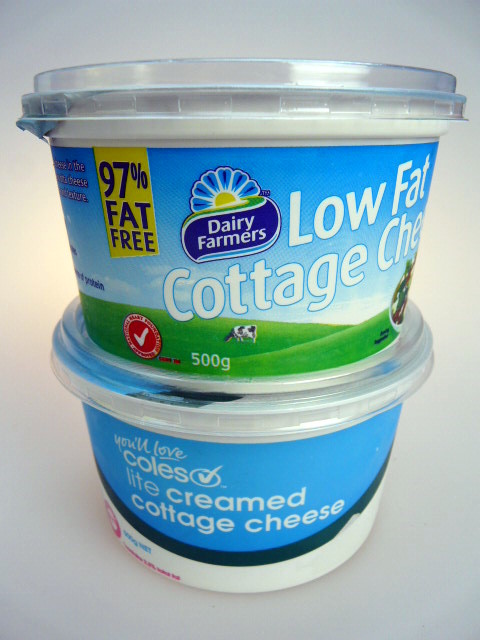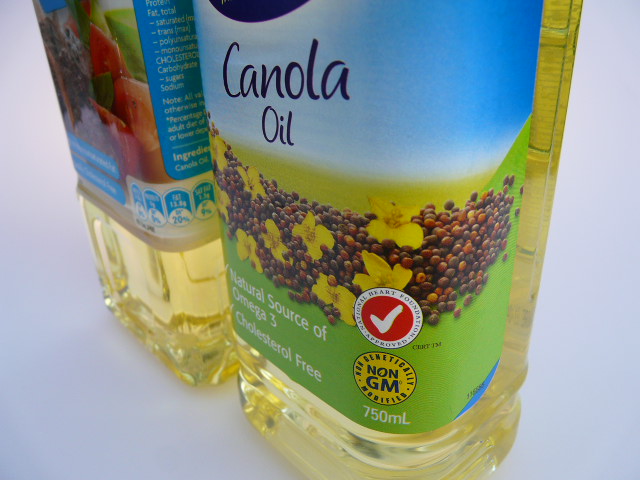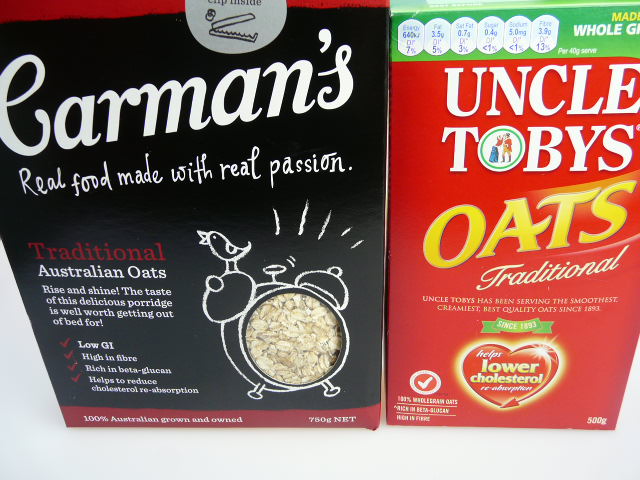- Home
- Blog
- Additives and Labels
- 5 reasons why I'm in favour of The Tick
5 reasons why I'm in favour of The Tick
Written by Catherine Saxelby
on Tuesday, 14 June 2011.
Tagged: carbohydrates, fat, fibre, food labels, food trends, guidelines, healthy cooking, oil, salt

Do you look for the red-and-white “Tick” of approval when you shop? Is it really giving you the healthiest choice on the shelf? Or is it something that companies just buy to make their product look better for you? I’ve long been a supporter of the Tick program and think it’s proved that it’s got the clout to make the Australian food supply healthier without alienating shoppers.
1. It's simple, quick and reliable
It's one simple, easy-to-spot logo. It gives shoppers a quick and dependable way to pick the healthier choice within the same food range. It's been around for over 22 years and is a de-facto front-of-pack labelling guide, simpler than the Traffic Light system now being considered and definitely simpler than the %DI (Per cent of Recommended Daily Intake) with its cluttered thumbnails.
2. It keeps manufacturers focused on nutrition
The Heart Foundation Tick on a food indicates it has been independently tested and shown to meet the Heart Foundation's nutrition criteria for that category of food. It's not the absolute perfect choice. But it's a healthier choice compared to similar foods or meals (Source: The Tick Update Dec 2010).
Because companies are contracted to the Tick Program under a licensing agreement, they are legally bound to comply with Heart Foundation standards. Non-compliance leads to corrective action (forcing them to make label changes) or to remove the product from the shelves. Not insignificant consequences!
3. It's tailor-made for a category
Each food category (e.g. oils, breads, brewakfast cereals, muesli bars, frozen dinners) has its own nutrition criteria. And rightly so. It wouldn't make sense to set the same criteria for oil and for bread. There are 60 sets of standards for supermarket foods.
For example, the Heart Foundation tests Breads for their saturated fat, trans fat, salt (sodium) and fibre, but Oils are only tested for the type of fat. Why? Oils have virtually no salt, no fibre and all have around the same total fat. The analysis pivots on whether an oil is high in polyunsaturated and monounsaturated, with less than 20 per cent saturated fat.
And for the Breakfast cereals category, foods have to meet standards for energy, saturated fat, trans fats, sodium and percentage wholegrain or fibre, to get the Tick, whilst a food in the cheese category has to meet standards for saturated fat, sodium and calcium, to get the Tick. See below.
Oils – two standards apply
- Saturated fat must be less than 20 per cent of the total fat
- Trans fat must be less than 1 per cent of the total fat
Breads – four standards apply
- Saturated fat must be 1.5 g per 100 grams or less
- Trans fat must be 0.2 g per 100 grams or less
- Sodium must be 400 mg per 100 grams or less
- Fibre must be 4 g per 100 grams or more
Breakfast cereals – five standards apply
- Energy must be 800 kJ per serve or less
- Saturated fat must be 1.5 g per 100 grams or less
- Trans fats must be 0.2 g per 100 grams or less
- Sodium must be 400 mg per 100 grams or less
- Wholegrain content must be 50 per cent wholegrains or more OR Fibre must be 3 g per serve or more
4. It's updated
The Heart Foundation revises its cut-offs which forces food companies to meet levels of lower salt, less or no trans fat, lower kilojoules, smaller portion size and more vegetable servings. A good thing for consumers!
5. It's realistic
The Tick doesn't set standards that will produce foods that taste terrible. Anyone can bake a bread with no added salt, but would many buy it? No. Ditto for salt-free cereal, soup and crispbread. But I bet you've hardly noticed the gradual drop in salt in a Tick bread.
Sodium (salt) comparison mg per 100 grams of bread
- Regular bread 600-800 mg
- Tick cut-off criteria less than 400 mg
- Salt-free bread less than 120 mg
Tick foods are not always "perfect" as far as nutritionists are concerned. However, relative to what else is out there, they are "better for you". The Heart Foundation is gradually, unnoticeably adjusting people's tastebuds back to a point where excess salt, trans fat, and lack of fibre isn't the norm in our everyday food. A hefty task!
Note: Catherine Saxelby has no vested interest in writing this article besides informing her readers! No payment was received from The Heart Foundation.
4 commonly asked questions about The Tick – and my take on them
Q1. Do the companies just pay for it?
A. No. Before they get the Tick, food companies have to get the product right so it meets the criteria for saturated fat, trans fat, salt, portion size or whatever is relevant to their category. Often this means reformulation, maybe several times (eg getting an instant soup to taste good with 30 per cent less salt and twice as much vegetables), retest in a lab and even purchase new equipment. Then they have to revise their labelling and advertising.
Q2. How much does the Tick cost?

And yes, you might pay a little more at the supermarket. For instance, a 500g tub of Dairy Farmers Low Fat Cottage Cheese with the Tick costs $4.98. A tub of Coles Lite Creamed Cottage Cheese with no Tick is only $4.29 (but it’s a home brand as well).
Q3. How do snack foods get a Tick?
A: They meet the limits for that category. They’ve been re-formulated to have less saturated or trans fat, less fat, little salt and possibly more fibre or calcium or whole grains. Maybe they are high in one key ingredient like bran or berries.
Foods don’t have to be fresh to get the Tick. Cereals and muesli bars come under criticism for looking too “processed” but in reality they’re ok for saturated fat - and that’s what’s being measured.
Remember people don’t eat everything fresh today. Snack foods approved by the Heart Foundation are still “healthier” relative to all the other snack products out there.
Q4. Is there a difference between two identical products, one with the Tick and one without?
A. Sometimes there is, sometimes there isn’t. For example, a packet of rolled oats with the Tick is essentially the same as rolled oats with no Tick. Buy whichever brand you like or which is the cheapest. On the other hand two muesli bars, one with the Tick and one without, could vary greatly.
Read a quick history of The Tick
1989
The Tick program was launched. In those days, before it was compulsory to carry nutrition labelling as it is today, all foods carrying the Tick logo were required to display Nutrition Information Panels. The Tick program was a first of its kind in the world with nutrition standards. Initially it kicked off with 11 food categories and 140 products. Some of these products are still with the Program, such as Meadow Lea and Flora spread.
1994
The Heart Foundation called on food companies to remove or reduce trans fats.
1996
The Tick program introduced saturated fat and trans fat limits for margarine spreads. The Heart Foundation worked with fats and oils companies to adapt their production and encouraged them to invest in equipment needed to produce soft margarines with less than 1% trans fat.
1999
A Heart Foundation position paper established the benefits of plant sterols and stanols to heart health.
2003-2006
The Tick set stricter levels for salt, trans fat, kilojoules and key nutrients such as calcium and protein.
2006
The Tick was introduced to take-away meals to offer healthier choices as more and more people eat out.
2007
McDonalds became the first quick service restaurant chain to get the Heart Foundation's Tick for foodservice.
Now
Now 90 companies and more than 930 food outlets sell over 1300 Tick-approved healthier products.
The Tick is in 18 out of 20 top selling food categories in the supermarket – fresh as well as processed foods. Note: the Tick is not allowed in categories such as confectionary and alcohol.
Foodwatch
The Good Stuff
The Boring Stuff
© 2025 Foodwatch Australia. All rights reserved
Website by Joomstore eCommerce







